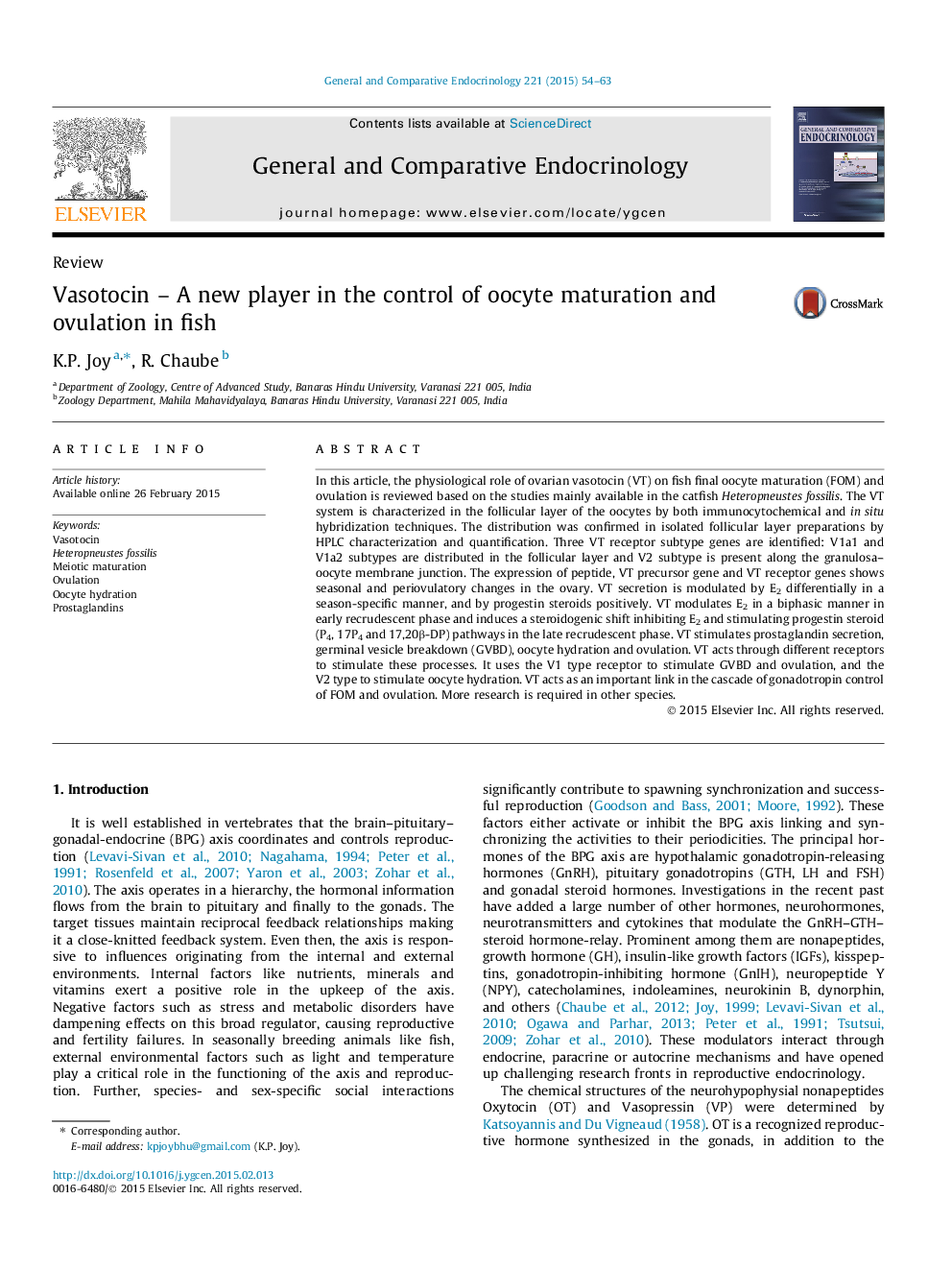| کد مقاله | کد نشریه | سال انتشار | مقاله انگلیسی | نسخه تمام متن |
|---|---|---|---|---|
| 2799906 | 1568885 | 2015 | 10 صفحه PDF | دانلود رایگان |

• The anatomy and physiology of ovarian vasotocin system in fish is reviewed.
• The peptide and the receptors are localized in the follicular layer or the oocyte membrane.
• VT stimulates oocyte maturation, oocyte hydration, ovulation and prostaglandin secretion.
• VT modulates steroidogenic shift inhibiting E2 and stimulating 17,20β-DP levels.
• VT, prostaglandin and 17,20β-DP form an autocrine positive feedback loop in the ovary.
In this article, the physiological role of ovarian vasotocin (VT) on fish final oocyte maturation (FOM) and ovulation is reviewed based on the studies mainly available in the catfish Heteropneustes fossilis. The VT system is characterized in the follicular layer of the oocytes by both immunocytochemical and in situ hybridization techniques. The distribution was confirmed in isolated follicular layer preparations by HPLC characterization and quantification. Three VT receptor subtype genes are identified: V1a1 and V1a2 subtypes are distributed in the follicular layer and V2 subtype is present along the granulosa–oocyte membrane junction. The expression of peptide, VT precursor gene and VT receptor genes shows seasonal and periovulatory changes in the ovary. VT secretion is modulated by E2 differentially in a season-specific manner, and by progestin steroids positively. VT modulates E2 in a biphasic manner in early recrudescent phase and induces a steroidogenic shift inhibiting E2 and stimulating progestin steroid (P4, 17P4 and 17,20β-DP) pathways in the late recrudescent phase. VT stimulates prostaglandin secretion, germinal vesicle breakdown (GVBD), oocyte hydration and ovulation. VT acts through different receptors to stimulate these processes. It uses the V1 type receptor to stimulate GVBD and ovulation, and the V2 type to stimulate oocyte hydration. VT acts as an important link in the cascade of gonadotropin control of FOM and ovulation. More research is required in other species.
Journal: General and Comparative Endocrinology - Volume 221, 15 September 2015, Pages 54–63